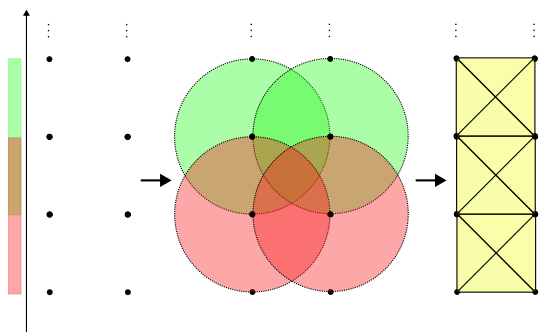We seek a counter example that shows that the Steinhaus filtration is not always -tame.
Construct the following data set
Our lens we define by , i.e., project onto . Cover the projection with the cover elements
Thus under the MAPPER our cover is then

Consider two adjacent balls and , then
According to https://math.stackexchange.com/questions/402858/area-of-intersection-between-two-circles the area of the intersection is
So the Steinhaus distance between two balls is
We now consider three adjacent balls and . According to https://www.benfrederickson.com/calculating-the-intersection-of-3-or-more-circles/,
So
Thus, the Steinhaus distance between three balls is approximately
In other words, in our Steinhaus filtration triangles are not born until about .
Notice that for all , the edge is in but it is not on the boundary of a triangle. Define the cycle
The cycles forms a linearly independent set; thus, the first homology group has infinite dimension. But for , the first homology group of is trivial. Therefore, there is at least one map in the persistence module that has infinite rank, i.e., it is not -tame.